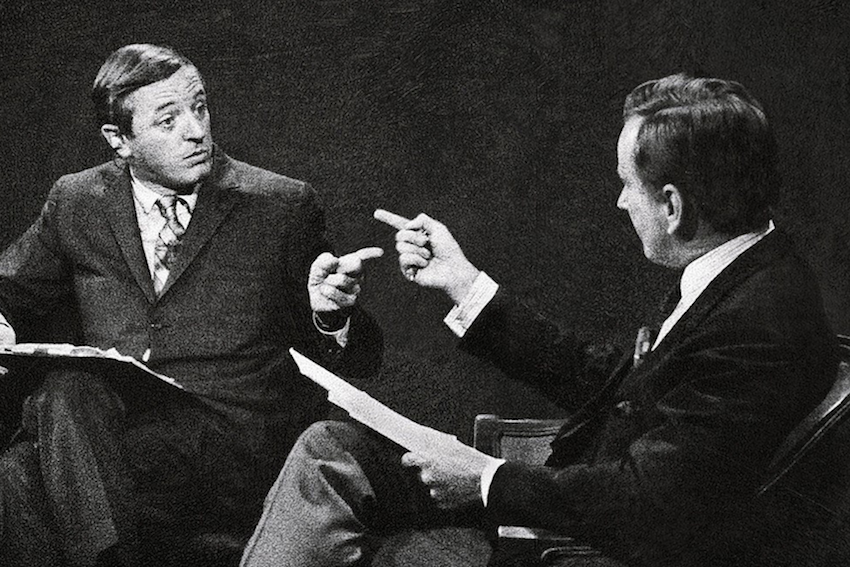By Pankaj Sharma (Contributor) – Email
Best of Enemies examines a watershed moment in history when the struggling American Broadcasting Company (ABC) decided to forgo gavel-to-gavel coverage of the 1968 Republican and Democratic National Conventions. Instead, it drew audiences through 10 sideline commentaries and debates between famed intellectuals Gore Vidal, a prolific writer whose work championed progressive causes and identity politics, and William F. Buckley, Jr., founder of the National Review, a magazine credited with revitalizing the American conservative movement.
Both men were accomplished and respected within their fields, and had about them similar airs — that of well-read Atlantic elites — but the rhetoric of the time put them on opposite ends of America’s cultural landscape. It was the era of Vietnam protests, questioning of the nation’s direction, and disillusionment of public trust. The assassinations of J.F.K., Bobby Kennedy, and M.L.K. loomed over all.
What could have been an opportunity to examine and debate the future of America, an opportunity to start a discourse based on good faith and common stakes, instead took a darker turn: it gave birth to what we now know as political punditry. What’s apparent from the footage and historical accounts is that both men lost themselves to common human weakness, pride, and ego. Buckley regarded Vidal as a lewd, fame-hungry pornographer, often referring to him as the “author of Myra Breckinridge” — one of Vidal’s controversial satire novels that tackled topics of sexuality and gender identity. In turn, Vidal saw Buckley as a bigot who represented a dangerous and hawkish segment of America’s polity. The real argument that ended up being televised to the public like a caged bloodsport was “who was the better person,” as both men tried to discredit each other’s morals and beliefs.
There are moments of serenity, of genuine back and forth over important issues. However the moments that capture the attention of audiences the most are the verbal spats, the barely restrained and seething animosity between the two men. The tenor of the discussion reaches a boiling point in the penultimate episode, when Vidal refers to his counterpart as a “crypto-Nazi.” The enraged Buckley, his playful and collected facade slipping, who fired back with, “Now listen, you queer, stop calling me a crypto-Nazi, or I’ll sock you in your goddamn face and you’ll stay plastered.” It is a tense exchange that both men, especially Buckley, would regret for the rest of their lives, igniting a lifelong feud that dabbled in litigation.
But it’s exactly the type of moment the audience loved. Through archive footage and personal accounts, Best of Enemies does an amazing job of fleshing out the character and personalities of its two main players — but it is also a critique of the personalities drawn to the televised arena, and the irresponsible machine that TV news media would become. It accomplishes, in an hour and 28 minutes, what Aaron Sorkin’s The Newsroom shouted for three seasons. Consider this documentary required viewing if you enjoy railing against news media and the art of insult journalism in general.



